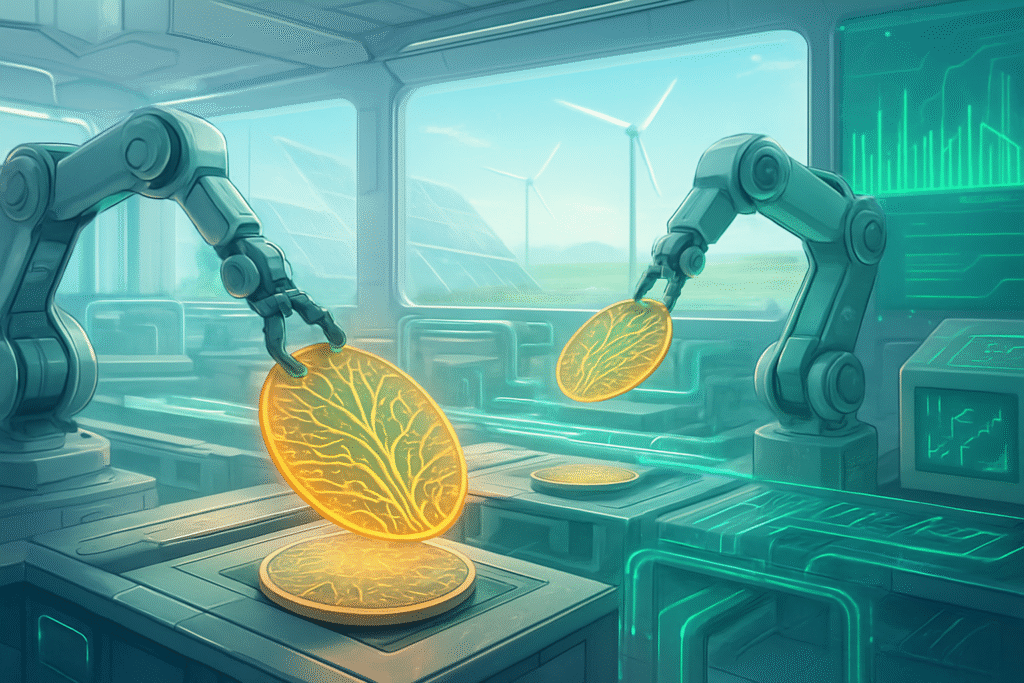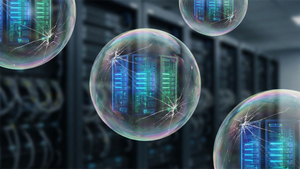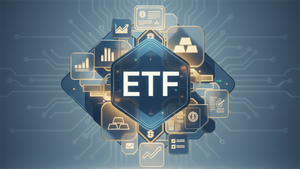
The global appetite for advanced electronics, from artificial intelligence infrastructure to everyday smart devices, has propelled the semiconductor industry into an era of unprecedented growth. However, this relentless expansion comes with a significant environmental footprint, making sustainability an increasingly critical concern. The industry, a foundational pillar of the digital age, is now under intense pressure to mitigate its colossal energy consumption, extensive environmental damage, and the urgent need for more eco-friendly production processes. This shift is not merely an environmental obligation but a strategic imperative, reshaping how chips are made and influencing the future trajectory of technology itself.
Engineering a Greener Tomorrow: Technical Deep Dive into Sustainable Chip Production
Semiconductor fabrication plants, or "fabs," are among the most energy-intensive facilities globally, consuming vast amounts of electricity comparable to entire cities. The transition from mature 28nm technology to advanced 2nm nodes, crucial for high-performance computing and AI, increases energy demand by approximately 3.5 times. Extreme Ultraviolet (EUV) lithography, a cornerstone technology for producing smaller, more powerful chips, is particularly energy-hungry, with individual tools consuming up to 10.2 gigawatt hours (GWh) annually.
To counter these demands, the industry is implementing a multi-faceted approach:
- Renewable Energy Integration: A fundamental shift involves transitioning to alternative energy sources. Companies like Taiwan Semiconductor Manufacturing Company (TSMC) (NYSE: TSM, TWSE: 2330) and Intel Corporation (NASDAQ: INTC) are investing heavily in on-site installations and procurement of solar, wind, and hydroelectric power, with Intel reporting 93% renewable energy usage in 2022-23. Advanced power distribution networks now integrate traditional and renewable sources using intelligent grid systems for dynamic load balancing.
- EUV Lithography Optimization: Innovations directly target the high energy demand of EUV. TSMC's "EUV Dynamic Energy Saving Program" has shown an 8% reduction in yearly energy consumption per tool. Researchers are also exploring novel EUV technologies, such as one proposed by Professor Tsumoru Shintake of OIST, which could reduce power consumption to less than one-tenth of conventional EUV machines through simplified optics. ASML Holding N.V. (NASDAQ: ASML, Euronext Amsterdam: ASML) is enhancing EUV energy efficiency by improving source efficiency and incorporating "sleep mode" for idle periods.
- Advanced Water Treatment and Recycling: Chip production is exceptionally water-intensive, with a single 200-mm wafer consuming over 5,600 liters. The industry is moving towards closed-loop recycling systems, employing cutting-edge filtration technologies like reverse osmosis, ultra-filtration, and membrane bioreactors to achieve ultrapure water standards. Many manufacturers are striving for Zero Liquid Discharge (ZLD) through advanced thermal desalination and technologies like Pulse-Flow Reverse Osmosis (PFRO), significantly reducing freshwater intake and wastewater discharge.
- Hazardous Waste Reduction and Green Chemistry: The industry traditionally uses various hazardous chemicals and gases with high global warming potential (GWP), such as nitrogen trifluoride (NF3). A key strategy is adopting green chemistry principles, developing and using raw materials and chemicals with lower environmental impact. This includes finding alternatives to fluorinated gases and especially per- and polyfluoroalkyl substances (PFAS), or "forever chemicals," widely used in lithography. Imec is at the forefront of developing PFAS-free alternatives for photoresists, while companies like Transene are developing "drop-in" replacements for PFAS in etching solutions. Advanced Oxidation Processes (AOPs) are also being employed to treat complex wastewater without producing problematic secondary waste.
Semiconductor industry experts widely acknowledge the critical need for sustainability. Lara Chamness, Senior Sustainability Analyst at TechInsights, emphasizes the "urgent need for sustainable energy solutions." Professor Tsumoru Shintake highlights his breakthrough EUV technology as capable of "almost completely solving these little-known problems" of high power consumption. Lenny Siegel of Chips Communities United criticizes historical practices, advocating for alternatives to PFAS. There's a growing consensus that "improving sustainability can be directly supportive of significant business goals—and help drive a competitive advantage."
Corporate Commitments and Competitive Edges in the Green Race
The drive for sustainability is profoundly impacting major semiconductor companies, tech giants, and innovative startups, shaping their operations, competitive strategies, and market positioning.
Taiwan Semiconductor Manufacturing Company (TSMC) (NYSE: TSM, TWSE: 2330), the world's largest dedicated semiconductor foundry, has been on the Dow Jones Sustainability Indices for 19 consecutive years. Their "green manufacturing" practices include significant investments in energy and water conservation, aiming for 25% renewable electricity by 2030 and full reliance by 2050. This reinforces TSMC's brand reputation and appeals to environmentally conscious investors, solidifying its market leadership.
Intel Corporation (NASDAQ: INTC) has adopted a comprehensive approach, targeting net-zero greenhouse gas (GHG) emissions across its Scope 1 and 2 operations by 2040, and net-positive water usage and zero waste to landfills by 2030. Intel's global renewable electricity usage reached 93% in 2022, with a goal of 100% by 2030. They are developing energy-efficient chip designs, AI telemetry, and lower carbon platforms, including sustainable data center processors. Intel views its leadership in corporate responsibility as a competitive advantage, mitigating risks and building brand value.
Samsung Electronics (KRX: 005930, OTCMKTS: SSNLF) is committed to achieving net-zero carbon emissions across its Device experience (DX) Division by 2030 and company-wide by 2050. Samsung aims to minimize environmental impact at every stage of production, developing low-power chips and enhancing performance while decreasing customer product power consumption. By linking sustainability with innovation, Samsung enhances its corporate responsibility image and attracts environmentally conscious consumers.
While ASML Holding N.V. (NASDAQ: ASML, Euronext Amsterdam: ASML) is a critical equipment supplier rather than a chip manufacturer, its innovations in photolithography systems indirectly contribute to more sustainable chip manufacturing by enabling smaller, more energy-efficient chips. This positions ASML as a crucial enabler of industry-wide sustainability.
Tech giants like NVIDIA Corporation (NASDAQ: NVDA), heavily reliant on semiconductors, are also pushing for sustainability in their operations, influencing their chip suppliers to prioritize energy efficiency for AI and data centers.
The industry is also fostering innovation through programs like "Startups for Sustainable Semiconductors (S3)," supported by corporate venture investors from major companies including Applied Materials (NASDAQ: AMAT), Micron Technology, Inc. (NASDAQ: MU), Intel, and Lam Research Corporation (NASDAQ: LRCX). These startups, such as Alsemy (AI for chip manufacturing), Coflux Purification, Inc. (PFA capture and destruction), and CuspAI (AI for sustainable materials), are developing disruptive technologies for water, materials, energy, and emissions. Their innovations, from low-temperature transistor technology to advanced thermal management, are poised to fundamentally change how semiconductors are manufactured and used, offering a pathway to significantly reduce the industry's environmental footprint.
A Foundational Shift: Wider Significance in the Tech Landscape
The pursuit of sustainability in semiconductor manufacturing carries profound implications, extending far beyond environmental considerations to shape the broader AI and technology landscape, global supply chains, national security, and economic stability. This crucial shift represents a fundamental reorientation comparable to past industrial revolutions.
The rapid advancement of artificial intelligence (AI) exacerbates the industry's environmental challenges. AI's insatiable demand for computing power is projected to cause a staggering 300% increase in CO2 emissions from AI accelerators alone between 2025 and 2029. Data centers, the backbone of AI, are experiencing an unprecedented surge in energy demand, making sustainable chip manufacturing a critical enabler for AI's continued, responsible growth. Conversely, AI and smart manufacturing are vital tools for achieving sustainability, optimizing processes, and improving resource allocation. This symbiotic relationship positions sustainable semiconductor manufacturing not merely as an environmental initiative but as a foundational infrastructural shift crucial for the responsible evolution of AI and other cutting-edge technologies.
The impact on global supply chains is significant. The notoriously complex and geographically dispersed semiconductor supply chain is seeing a trend towards regionalization, driven by geopolitical tensions and the need for resilience. While this can reduce shipping emissions, careful management is needed to avoid duplicated infrastructure. Green supply chain initiatives, including ethical sourcing and circular economy principles, are becoming strategic imperatives.
For national security, semiconductors are integral to military systems and critical infrastructure. Governments, exemplified by the U.S. CHIPS and Science Act, are boosting domestic manufacturing to strengthen strategic autonomy. Integrating sustainability into these national strategies ensures that domestic production is not only resilient but also environmentally responsible.
Economic stability is also at stake. Implementing sustainable practices can lead to significant cost savings through improved energy efficiency and reduced waste, enhancing return on investment. Regulatory compliance drives these efforts, avoiding costly fines. Prioritizing sustainability boosts brand value, fosters innovation, and creates new market opportunities, ultimately bolstering national economic stability.
Despite the compelling benefits, challenges remain. The cost of upgrading to greener processes and equipment is substantial. The complexity of introducing sustainable alternatives without compromising performance in intricate manufacturing processes is high. There's also the potential risk of greenwashing, where companies may exaggerate their environmental efforts. To counteract this, transparent reporting, standardized frameworks like Life Cycle Assessments (LCA), and verifiable commitments are essential.
This shift can be likened to the invention of the transistor and integrated circuit, which provided the foundational physical bedrock for the digital age. Similarly, sustainable semiconductor manufacturing is providing the essential, environmentally sound physical bedrock for the responsible growth of AI and future technologies. It reflects a proactive evolution towards integrating environmental responsibility into the core of manufacturing, expanding what constitutes "efficiency" and "quality" to include ecological responsibility.
The Horizon of Green Chips: Future Developments and Expert Outlook
The future of sustainable semiconductor manufacturing promises a dynamic and transformative period, marked by rapid integration of advanced technologies and a holistic approach to environmental stewardship.
In the near term (next 1-5 years), expect accelerated adoption of renewable energy across leading fabs, with companies like Intel targeting 100% renewable energy by 2030. Energy efficiency will be paramount, driven by upgraded equipment and optimized cleanroom operations. Green chemistry will see increased exploration for less regulated, environmentally friendly materials and PFAS alternatives, despite the high costs. Advanced water recycling and treatment systems will become standard to reduce water usage, with some companies aiming for net-positive water use. Smart manufacturing and AI will be increasingly leveraged for energy savings, efficiency, and quality control, including the use of digital twins. The transition to green hydrogen in various processes and the development of sustainable packaging solutions will also gain traction.
Long-term developments will involve more systemic changes, moving towards true circular economy principles that emphasize resource efficiency, waste reduction, and the recovery of rare metals from obsolete chips. Continued investment in advanced R&D across packaging, 3D integration, and new materials will focus on energy-efficient computing. Innovations in low-temperature processing and the potential for nuclear-powered systems are also on the horizon to meet immense energy demands. A holistic supply chain decarbonization, including green procurement and optimized logistics, will become a major focus.
These sustainable semiconductors will enable a greener, more connected world. They are vital for improving the efficiency of renewable energy systems, powering electric vehicles (EVs), and creating energy-efficient consumer devices. Critically, they will help mitigate the massive energy consumption of data centers and cloud computing by enabling low-power processors and advanced cooling solutions for AI and machine learning. Green chips will also be foundational for smart infrastructure and the Industrial Internet of Things (IIoT).
Despite the optimistic outlook, significant challenges persist. The inherently high energy consumption of advanced chip manufacturing, particularly with EUV, will continue to be a hurdle. Greenhouse gas emissions from process gases and electricity generation remain substantial. Water scarcity, hazardous chemical use, and the growing problem of electronic waste (e-waste) demand continuous innovation. The complexity of the global supply chain makes managing Scope 3 emissions particularly difficult, and the high capital costs for upgrades, along with technological limitations for greener alternatives, present barriers. The ever-increasing demand for advanced chips, especially for AI, creates a "paradox of sustainability" where efficiency gains are often outpaced by demand growth.
Experts predict a significant market expansion for green semiconductors, projected to grow from USD 70.23 billion in 2024 to USD 382.85 billion by 2032, driven by energy-efficient electronics and government support. However, TechInsights predicts that carbon emissions from semiconductor manufacturing will continue to rise, reaching 277 million metric tons of CO2e by 2030, primarily due to AI and 5G demand. This underscores the urgency for advanced management strategies. Smart manufacturing, a focus on the entire value chain, and intensified collaboration across the industry are seen as crucial for navigating this "twin transition" of digitalization and greening the industry.
The Green Chip Imperative: A New Era of Responsibility
The journey towards sustainability in semiconductor manufacturing is not just an environmental footnote but a defining chapter in the industry's history. The confluence of escalating demand for advanced chips, particularly for AI, and increasing global awareness of climate change has made eco-friendly production an unavoidable imperative. From colossal energy demands and vast water consumption to the use of hazardous chemicals, the industry's footprint is significant, but so is its commitment to change.
Key takeaways include the rapid adoption of renewable energy, the relentless pursuit of energy efficiency in every process, the groundbreaking efforts in green chemistry and water recycling, and the critical role of AI in optimizing manufacturing. Major players like TSMC, Intel, and Samsung are leading the charge with ambitious net-zero goals and substantial investments, while startups are introducing disruptive innovations that promise to fundamentally reshape production.
This development's significance in AI history is profound: sustainable semiconductor manufacturing is the essential physical infrastructure for the responsible and long-term growth of AI. Without greener chips, the exponential energy demands of AI could become an unsustainable burden. This shift is comparable to foundational industrial revolutions, moving beyond mere output maximization to integrate environmental responsibility into the core of technological progress.
In the coming weeks and months, watch for further corporate commitments to net-zero targets, the rollout of new energy-efficient manufacturing equipment, and continued breakthroughs in green chemistry, especially in finding viable alternatives to PFAS. Pay attention to how regionalization efforts in supply chains evolve with sustainability goals, and how governments continue to incentivize green manufacturing through policies like the CHIPS Acts. The "Green Chip Revolution" is not just a trend; it's a fundamental redefinition of what it means to build the future.
This content is intended for informational purposes only and represents analysis of current AI developments.
TokenRing AI delivers enterprise-grade solutions for multi-agent AI workflow orchestration, AI-powered development tools, and seamless remote collaboration platforms.
For more information, visit https://www.tokenring.ai/.





